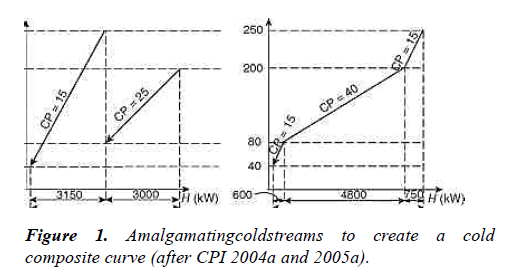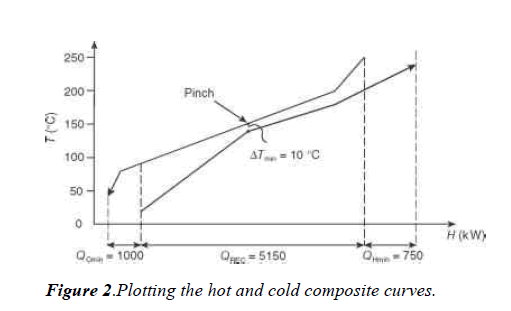Review Article - Journal of Food Technology and Preservation (2021) Volume 5, Issue 3
Energy use in food processing industry.
Ekaete Alice Tobin1*, Martha Okonofua1, Azuka Azeke2, Vivian Ajekweneh3, George Akpede4
1Department of Community Medicine, Alex Ekueme Federal Teaching Hospital, Ebonyi state, Nigeria
2Department of Obstetrics and gynaecology, Irrua Specialist Teaching Hospital, Irrua, Edo State, Nigeria
3Department of Community Medicine, Irrua Specialist Teaching Hospital, Irrua, Edo state, Nigeria
4Department of Paediatrics, Irrua Specialist Teaching Hospital, Irrua, Edo State, Nigeria
- Corresponding Author:
- Ekaete Alice Tobin
Department of Community Medicine
Alex Ekueme Federal Teaching Hospital
Ebonyi state
Nigeria
E-mail: tobinalice@gmail.com
Accepted date: 15 March, 2021
Citation: Ekaete Alice Tobin,Azuka Azeke,Vivian Ajekweneh. Energy use in food processing industry. J Food Technol Pres 2021;5(3):32-34.
Abstract
There are many opportunities for improving energy efficiency in the food industry through evaluation,addition and effective governmental energy policies and voluntary process analysis and improvement.Future directions for energy efficiency studies should focus on improving existing plants, developingenergy-efficient process technology, improving and expanding demand, side management programs,creating informed and reasonable energy policies, and further research in the possibilities of zerodischarge plants.
Keywords
Energy, use food, processing, sources.
Introduction
The production of food, which sustains the human energy balance, requires a considerable and continuous supply of energy delivered from natural resources, principally in the form of Fossil fuel, such as coal, oil and natural gas. For example, a typical energy requirement for the delivery of (1J) in the form of food consumes almost (10J) from natural resources. In the production of food for human consumption, the processing of food and drink requires a considerable part of this .The steady increase in the human population of the planet and its growing nutritional demands has produced an annual increase in the energy demand.
Energy consumption of food and drink industries is up to 40% in the last decade. The accelerating development of many countries with large populations, such as China and India, has resulted in a large increase in energy demands and a steady increase in energy cost. The growing demand for energy from the increase in world population has also resulted in unpredictable environmental conditions in many areas because of increased emissions of CO2, NOx, SOx, dust, black carbon and combustion processes waste [1]. As the developing world increases its food production, at the same time it is becoming increasingly important to ensure that the production/processing industry takes advantage of recent developments in energy efficiency and minimizes the amount of waste that is produced [2].
The food and drink industry has many processes that consume energy see Table 1 below. The energy and related environmental cost, and imposed emission and effluent limits, charges and taxation, contribute substantially to the cost of production. A potential solution to the problem however, there are some specific features in food processing that make optimization for energy efficiency and total cost reduction more difficult when compared with other processing industries [3] for example in the oil refining industry, there is a continuous mass production concentrated in a few locations which offers an obvious potential for large energy savings.
| Unit process/operation | Effects |
|---|---|
| Material handling and storage | Germination |
| Sorting/screening | Smoking |
| Peeling | Hardening |
| Washing and thawing | Carbonation |
| Cutting/slicing/chopping | Melting |
| Mixing/blending | Blanching |
| Grinding/milling/crushing | Cooking and boiling |
| Forming/moulding/extruding | Baking |
| Extraction | Roasting |
| Centrifugation sedimentation | Frying |
| Filtration | Tempering |
| Membrane separation | Pasteurisation |
| Crystallisation | Evaporation |
| Removal of fatty acids | Drying |
| Bleaching | Dehydration |
| Deodorisation | Cooling and chilling |
| Decolourisation | Freezing |
| Distillation | Freeze-drying |
| Dissolving | Packing and filling |
| Solubilisation/alkalising | Cleaning and disinfection |
| Fermentation | Refrigeration |
| Coagulation | Compressed air generation |
Table 1: Unite processing and consumed energy in the food and drink industries.
Renewable energy
Sources in order to reduce pollution and waste generation, and so reduce overall costs. A typical example is the use of bagasse.
Biofuel
For generating the energy needed for processing in a cane sugar plant and exporting any surplus electricity into the distribution network.
Clean energy
From the sun light requiring no cost except generation and maintenance. There are a number of well-established methodologies available to optimize the use of energy, and consequently reduce operating costs. Many of these methods only require.
Good management practice:
• Good housekeeping,
• Objective analysis based on optimum measurement policy and planning.
• Optimum supply chain management based on work flow optimization.
There is also an increasing role in waste management and coproduct recovery for Life-Cycle Assessment (LCA), not only in the production chain, but within the complete life span of production, processing, consumption and waste disposal, An advanced methodology for the improvement of energy efficiency -which has been widely applied in the chemical, power generating and oil refining industry - is process integration. This methodology has also been referred to as 'pinch technology', and the area of the technology mainly associated with heating reduction costs is often referred to as 'heat integration'[4]. This methodology has a large potential in the food processing industry.
• Energy saving and minimization.
• Process integration/ pinch technology,
• Combined heat and power minimization
• Combined energy and water minimization
This a novel methodology to reduce energy demand and emissions on a site comprising of individual processing units and an integrated utility system, and at the same time maximizing the production of cogeneration shaft.
This methodology is based on the analysis and understanding of the heat exchange between process streams through the use of a temperature-enthalpy diagram [5]. The methodology first identifies sources of heat (termed 'hot streams') and sinks of heat (termed 'cold streams') in the process flow sheet.
Sources of heat can be combined together to construct the composite hot stream and sinks of heat can likewise be combined together to construct the composite cold stream Figure 1. The relative location of these curves on the temperature-enthalpy diagram is dependent on the allowable temperature difference for heat exchange [6]. The next step is therefore to select a minimum permissible temperature approach between the hot and cold streams, allowable minimum heating requirement (ATmin). The selection of the most appropriate or optimum allowable heating requirement (ATmin) is a result of an economical assessment and trade-off between the capitals and operating costs which are mainly costs for energy use of the process being analyzed [7-9]. A large allowable heating requirement implies higher energy use and costs and lower capital costs. Consequently for increasing energy cost (for example the price of gas) the optimum allowable heating requirement is reduced, meaning the heat exchanger system is allowed to recover more energy, but at the expense of more capital to pay for the greater heat transfer area. This issue has been discussed in greater detail elsewhere.
Opportunities for energy efficiency improvements
Recycling part of the grain drying air or using heat exchangers to increase the temperature of the incoming drying air would result in a 25% savings in energy used in the dryers. Economically practicable savings in the industry of 30% would be possible with the installation of economizers to reduce boiler losses [10].
Energy use in dairy Industry
The number of dairy plants has decreased, and the value added has increased in recent years. Processing of dairy products requires large amounts of energy, with concomitant production of large amounts of high BOD and TSS waste [11].To reduce energy and costs associated with water and waste, measures such as optimizing and reusing concentrated waste streams as ingredients should be taken. In addition, dairy processes require large amounts of energy for refrigeration and pasteurization processes. Efficient equipment, using ''waste energy" from one stream as usable energy for another, and onsite energy generation are some methods of reducing energy costs. Figure 2. The dairy industry also creates a significant amount of waste per year [12]. The most energy consuming process in this industry is the production of dried milk using drum.
Conclusion
The food industry sector is the fifth largest energy consumer in the manufacturing industry sector. Process heating, cooling/ refrigeration, and boiler losses were the most energy consuming processes in the industry accounting for range of energy inputs respectively. Application of energy reducing techniques such as recovery and reuse of hot and cold streams, heat recovery from compressors and more efficient boiler operations can lead to increases in efficiency.
References
- Sheny CW, Tordjman S, Morin V, et al. Clinical, physiologic,and biologic impact of environmental and behavioural interventions in neonates during a routine nursing procedure. J Pain 2005; 6:791-7.
- Toa HL, da Costa ED, Catisti R. Effect of the oral administration homeopathic Arnica montana on mitochondrial oxidative stress. Homeopathy 2013; 102:49-53.
- Singh H, Singh D, Soni RK. Comparison of pain response to venepuncture between term and preterm neonates. Indian Pediatr 2000; 37:179-81.
- Hatfield LA. Neonatal pain: What's age got to do with it? Surg Neurol Int 2014; 5:S479-89.
- Iannitti T, Medina JCM, Bellavite P, et al. Effectiveness and safety of arnica montana in post-surgical setting, pain and inflammation. American Journal of Therapeutics 2016; 23:e184-97.
- Krasteva M. Pain in the Neonatal Period I--Physiological aspects, causes, response, diagnosis a long-term effects of neonatal pain. Akush Ginekol 2013; 52:47-53.
- Krasteva M. Pain in the Neonatal Period-II Non-pharmacological and pharmacological treatment Akush Ginekol 2013; 52:29-37.
- Kucukoglu S, Kurt S, Aytekin A. The effect of the facilitated tucking position in reducing vaccination-induced pain in newborns. Ital J Pediatr 2015; 41:61.
- Lyss G, Schmidt TJ, Merfort I, et al. Helenalin, an antiinflammatory sesquiterpene lactone from Arnica, selectively inhibits transcription factor NF-kappa B. Biol Chem 1997; 378:951-61.
- Ludington-Hoe SM, Hosseini R, Torowicz DL. Skin-to-skin contact(Kangaroo Care) analgesia for preterm infant heel stick. AACN Clin Issues 2005;16:373-87.
- Mark Shen, Gladys El Chaar. Reducing pain from heel lances in neonates following education on oral sucrose. Int J Clin Pharm 2015; 37:529-36.
- Anna M, Ekaterina U, Nikoleta P, Mariana P. Prevention of hyaline membrane disease (HMD) in Preterm infants, World journal of pharmacy and pharmaceutical sciences 2016; 5:9-16.

